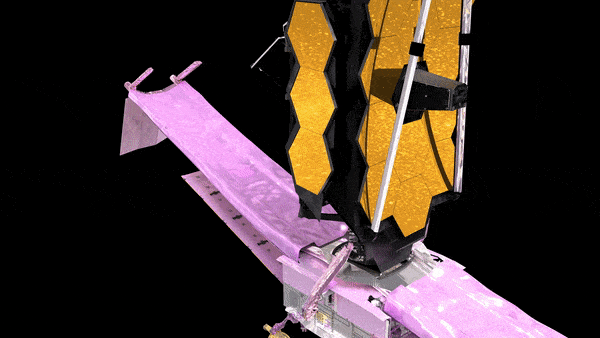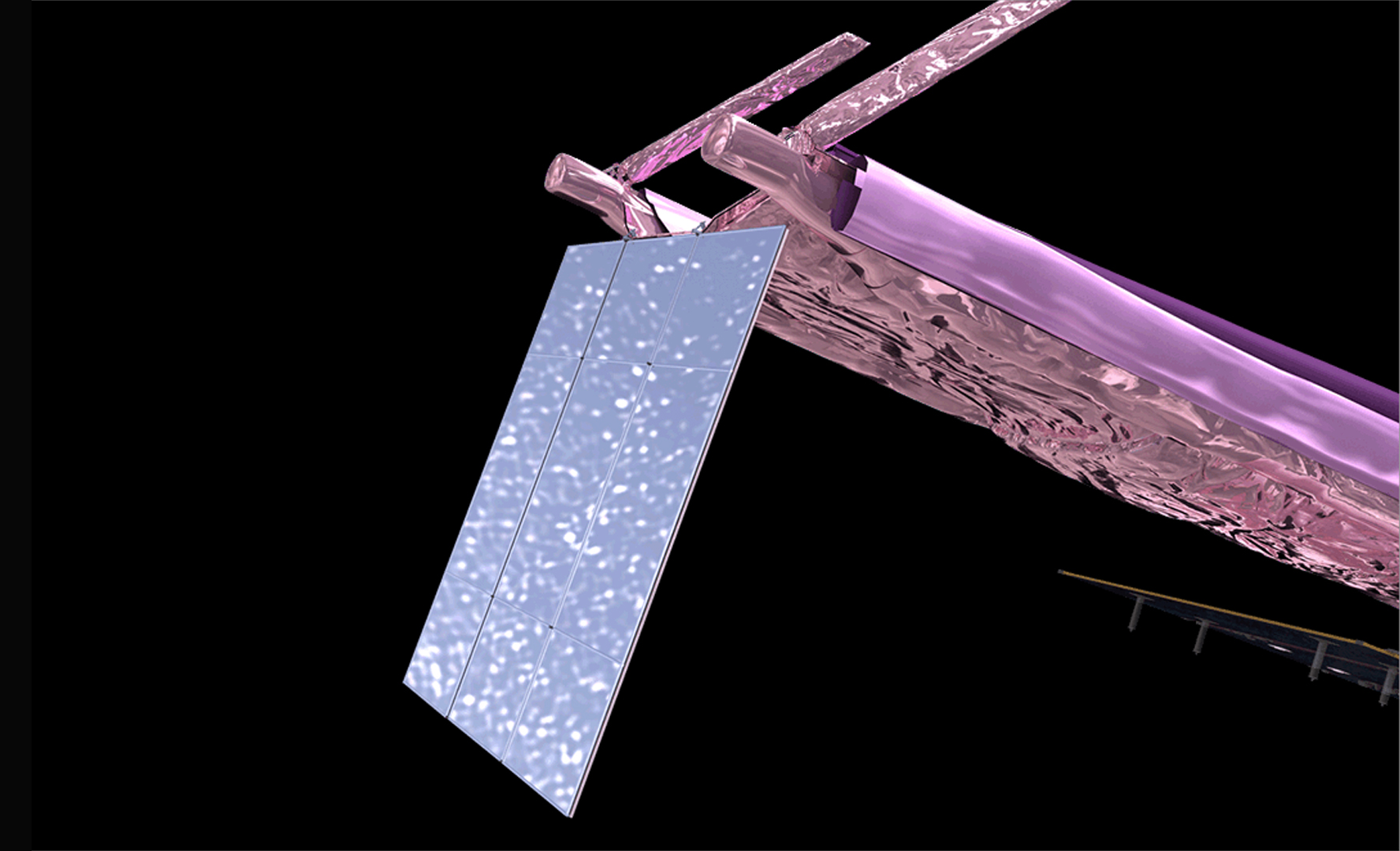James Webb Space Telescope uncovers massive sunshield in next step of risky deployment

The James Webb Space Telescope has unwrapped its sunshield, crossing another important item off of its lengthy and risky deployment to-do list.
After successfully extending its deployable tower assembly (DTA), a structure that connects Webb's two halves, on Thursday (Dec. 29), the telescope had the room to begin the preliminary steps to unfurl its gigantic sunshield. Today (Dec. 30), mission teams completed two major next steps: deploying the James Webb Space Telescope's aft momentum flap and releasing the sunshield's protective membrane cover.
Webb still must unfurl the sunshield, which it will do in the next day or so by extending two booms. The mission team will then spend a few days getting the five-layer structure to the proper tension, wrapping up such work no earlier than Sunday (Jan. 2).
That will end the sunshield deployment, and the Webb team will move on to the telescope's optics. Webb's primary and secondary mirrors are expected to be deployed by Jan. 7, according to NASA, bringing the observatory's deployment phase to and end.
You can follow along with Webb's next steps in its deployment here.
Live updates: NASA's James Webb Space Telescope mission
Related: How the James Webb Space Telescope works in pictures
Webb's sunshield is a vital component that keeps the space telescope's optics and instruments at the correct (super cold) temperature. But the sunshield, which extends to about 70 by 47 feet (21 by 14 meters), is so large that to get it to space the mission team had to fold it up. That means that now that Webb is in space, it has to unfold.
Get the Space.com Newsletter
Breaking space news, the latest updates on rocket launches, skywatching events and more!
"Just as a ship's mast must be set in position and the rigging established before the ship unfurls its sails, Webb's pallet structures, momentum flap and mid-booms will soon all be in place for Webb's silver sunshield to unfold," NASA said in a statement Thursday referencing Webb's previous step of deploying its pallet structures and its upcoming plan to deploy mid-booms.

Today, soon after 9 a.m. EDT (1400 GMT), the Webb team deployed the "aft momentum flap" in a maneuver that took about eight minutes, according to the above statement from NASA. This flap helps Webb maintain its orientation in orbit without using extra fuel.
Once the sunshield is deployed, it will be pushed continuously by photons from the sun. The momentum flap will help counteract this potential sunlight nudge, allowing the observatory to conserve fuel it would have otherwise needed to use to maintain its position.
After deploying the flap, the Webb team released the protective membrane cover that enveloped and protected the sunshield during ground activities and Webb's launch to space. The cover was released via electrically activated devices, according to NASA.
Deploying Webb and its massive sunshield is a tremendous and risky undertaking. Webb has approximately 344 steps labeled "single point failures" and, as mission experts have said, about 80% of those take place during deployment.
NASA Administrator Bill Nelson even shared with Space.com that, while he was feeling "optimistic and confident" ahead of Webb's launch, he was also feeling "nervous," in part because of this challenging deployment process.
It will take Webb approximately 30 days from its launch date of Dec. 25 to reach its final destination, L2, or the Earth-sun Lagrange point 2, a gravitationally stable point in space about a million miles (1.5 million kilometers) from Earth.
Email Chelsea Gohd at cgohd@space.com or follow her on Twitter @chelsea_gohd. Follow us on Twitter @Spacedotcom and on Facebook.
Join our Space Forums to keep talking space on the latest missions, night sky and more! And if you have a news tip, correction or comment, let us know at: community@space.com.

Chelsea “Foxanne” Gohd joined Space.com in 2018 and is now a Senior Writer, writing about everything from climate change to planetary science and human spaceflight in both articles and on-camera in videos. With a degree in Public Health and biological sciences, Chelsea has written and worked for institutions including the American Museum of Natural History, Scientific American, Discover Magazine Blog, Astronomy Magazine and Live Science. When not writing, editing or filming something space-y, Chelsea "Foxanne" Gohd is writing music and performing as Foxanne, even launching a song to space in 2021 with Inspiration4. You can follow her on Twitter @chelsea_gohd and @foxannemusic.









